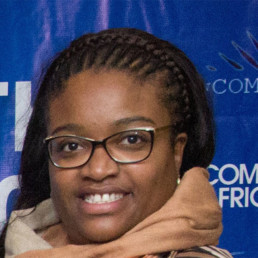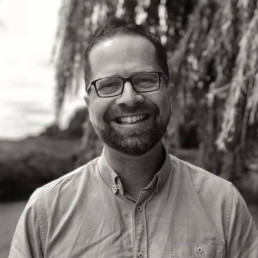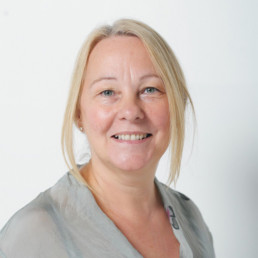Tackling Sexism in Schools Needs to Start with the Curriculum

Written by Rachel Fenn
Co-Founder of End Sexism in Schools and former Head of English.
End Sexism in Schools (ESIS) is a grassroots campaign organisation set up in 2020. Our aim is to support girls and boys to fulfil their potential, without gendered expectations, in a safe and supportive school environment.
Over the past two years, numerous scandals have revealed the widespread extent of sexual harassment, sexism and misogyny in schools, with Ofsted’s 2021 report into this commenting on how boys have a sense of ‘superiority’ that makes them feel they can treat girls as they wish. The answer to this has been to overhaul the PSHE curriculum to explicitly teach consent, but we know that this is merely treating the symptoms, not the cause.
The reality is that women are virtually invisible within the content of the academic curriculum, and we draw a direct line between this invisibility, and the sexual harassment boys inflict on girls. Without ever hearing women’s voices, reading and discussing women’s experiences, and learning to value and respect women’s contribution to the world, is it any wonder that boys grow up viewing women as inferior, and worthy of little respect?
When our founder first made this connection and began to campaign to change the curriculum, she was met with a problem: she had no concrete evidence to back up her claims. Research into the content of the curriculum in secondary schools was limited, and little proof beyond anecdotal evidence was available to demonstrate the extent of the problem. As such, ESIS’s first project was to uncover gender bias in the teaching of English Literature at Key Stage 3 (school years 7-9) in England’s schools. English was chosen due to it being a core subject studied by all pupils to the age of 16, and it being straightforward to identify gender bias in the curriculum content by collating data on the sex of authors and protagonists on set text lists.
In 2021, using a small army of volunteers, we researched the English curriculum in nearly a third of England’s secondary schools. With no requirements to teach any specific texts other than Shakespeare, schools have free rein to teach what they like at Key Stage 3. Given this freedom, the lack of diversity we uncovered is shocking. Our key findings are as follows:
- 82% of novels taught feature a male protagonist
- 77% of schools teach one or no whole texts by female authors across the three years of KS3, with 44% teaching none at all and 33% only teaching one; this is out of an average of nine whole taught texts across the three years
- However, the actual number of whole novels taught by female authors is likely to be even less because a larger percentage of male authored texts were mandatory (as opposed to being on a list of choices) than female – 68% compared to 57% respectively
- 99% of plays taught are by male writers, only 1% by female, and only 2% have a lead female protagonist
- A small number of schools account for the majority of female-authored texts taught; 16% of schools teach 50% of those listed in school curricula
Coupled with the fact that only 7% of pupils study a book by a female author at GCSE, this means that most children educated in England will go through their entire compulsory education never having studied a whole text (as opposed to an extract, poem or short story) by a female author. Considering that schools have free choice of the texts they teach, and that 77% of secondary school English teachers are female (the highest proportion of any academic subject), the fact that most are continuing to fall back on the teaching of male authored texts with male protagonists is powerful evidence of how engrained misogyny and patriarchal values are embedded in our society.
English is just the tip of the iceberg; the invisibility of women is evident in every area of the academic curriculum, and it is our mission as an organisation to carry out the research required to prove this, and then campaign for change. PSHE cannot continue to be touted as a panacea for solving misogyny in schools when every other lesson pupils attend teaches them that women have no value. Cultural change will only happen when the academic curriculum is overhauled to create an equal space for women’s achievements, voices and experiences alongside those of men.
You can read our report into the English curriculum here. If you’d like to join our efforts to End Sexism in Schools, we are always looking for new volunteers. Please do contact us at endsexisminschools@gmail.com.
Education DEI Calendar 2022-23

Written by DiverseEd
Diverse Educators started as a grassroots network in 2018 to create a space for a coherent and cohesive conversation about DEI. We have evolved into a training provider and event organiser for all things DEI.
We know that it is really hard to keep on top of all of the awareness and celebration days, weeks and months to include in the school calendar!
We also appreciate that it is equally difficult to know when to schedule/ host a DEI event without causing an unintentional clash or how to find out what DEI events are happening.
So we are proposing a work-in-progress solution which will evolve and grow as others contribute to it to co-create a comprehensive resource to make all of our lives a little bit easier…
The Education DEI Calendar 2022-23 is a draft – it is not perfect, it is not complete and it is in no way trying to exclude any key dates! Please bear that in mind as you review it and share solutions instead of problems if there are things you would like to suggest we add/ change as it evolves.
At the moment it captures lots, but not yet all, of the key dates from the following free resources which we signpost to people in our network:
- The CIPD Inclusion Calendar 2022
- The Dual Frequency Diversity, Equality and Inclusion Calendar 2022
- The Inclusive Employers’ Diversity and Inclusion Calendar
- The James Wants to Know You Diversity Calendar
- The NAHT Equality, Diversity and Inclusion Calendar 2022
- The NHS Diversity, Equality and Inclusion Events Calendar 2022
We have collapsed lots of these dates into a spreadsheet to make it more educator-friendly – so that you can filter by month, week, day and date to see what is going on. (You could also copy and paste it alongside your school calendar or your school’s assemblies schedule to cross-reference where themes are being explored).
We have not yet added all of the religious and cultural days as this will probably need another column as there are so many dates to be aware of. This will be the next layer of detail so keep checking back as it evolves over the summer break ready for the new academic year and start of term.
Note that when there is more than one theme on any given day/ week/ month we have sorted them by A-Z so that there is no perceived hierarchy. Also that when an awareness week is split across two weeks we have shifted it to the week it falls in the most.
Remember that you always have creative license to make these dates work for you, your school and your community – for example, some themes might need an awareness assembly before it falls on the calendar, others may require a celebration event following a key date. Consider how to streamline how many of the dates you want to mark so that it does not create overwhelm for staff nor students.
We have highlighted the weekends for all of the grassroot networks who host DEI events – the idea is that organisations in our network will be able to edit/ add dates of events with contact details and links to register/ book a ticket.
Do help us grow and improve the Education DEI Calendar 2022-23 by making suggestions and giving us feedback here. We hope you find draft 1 helpful to get you started!
SEND Perspective: Why is it important to introduce intersectionality conversations in UK schools? Exploring seven top tips to address it.

Written by Dilma de Araujo PhD (c)
SEND specialist. She has more than ten years of experience in education working in different educational institutions in the private and public sectors from early years to higher education levels, addressing special education needs; education policy research; gender inclusion and diversity.
‘A year nine boy of Black Caribbean heritage, claiming free school meals and with special education needs to represent a ‘typical’ student likely to be excluded from school.’
(Hawkins, 2019 p.14)
The Special Education Needs field involves a broad spectrum, where intersectional topics and issues such as gender, race and socioeconomic status are susceptible to emerge and often become a matter of great concern if the appropriate support and awareness initiatives are not in place. Hence, reflecting in the above statement by Hawkins (2019), it suggests that there are some significant points concerning financial, social and academic disadvantage and vulnerability indicators that should be addressed differently in our schools and educational institutions, raising awareness and incorporating a culture of dialogue, involving parents, carers and local communities actively in dynamic and creative activities in which different participants and agencies work in constructive partnership and collaboration (e.g. mental health and wellbeing practitioners; Local Authorities representatives, teachers, special education needs coordinators, local and national community activists and artists) aiming to improve not only black students, but all the multicultural and non-multicultural spectrum of school.
Thus, the role of schools, teachers and educational leaders can represent a crucial transformational factor. Hence, schools are designed to be a place where inclusion patterns and strong affinity bows of compassion, understanding and unity are consistently nurtured by adults, children and local communities. Aiming to generate diversity and equal dimensions within our multicultural society. To provide a healthy, safe and inclusive teaching and learning environments. Thus, school leadership teams have the responsibility to explore and address the following issues:
- Bias in the assessment process indicating over, under, misidentification and diagnosis;
- Rational parental response to historical discriminatory bias in the identification;
- Assessing migration’s resulting in different family health and cognitive endowments;
- Differential parenting behaviours and home learning environments;
- Differential experiences of deprivation between ethnic groups (Haye, 2021).
School senior leadership teams’ responsibility towards the implementation of an inclusive and diverse curriculum, programmes, initiatives and cultural activities in order to improve the multicultural perspective in their schools, taking into consideration students mental, cognitive, physical, emotional conditions, needs and circumstances raising the bars towards a positive learning performance and outcomes. In this line of thought, seven essential foundational strategies focus on the improvement of a culture of dialogue and reflective approaches concerning language, thoughts and actions, aiming to clarify different points of view and perspectives related to race, social, cultural inclusion.
Tip 1: Nurturing a culture of dialogue
Promoting dialogues involving racial matters in school can reduce bias, prejudice and pejorative attitudes. Thus, it is important reshape the teaching and learning approaches and behaviours may improve mutual respect, compassion, self and multicultural knowledge. E.g. cooperation involving students, teachers and other school staff. They can organize special pod-cast, webinars and school radio where life testimonials and experiences could address topics related to racial discrimination, macroaggressions and microaggressions.
Tip 2: Promoting reflection in and on action
Applying reflective practices to enhance teaching and learning is crucial to obtain valuable and effective results. Reflecting in-action provides the opportunity to explore and evaluate the academic practice and activities while the learning is taking place, opening the horizons not only for behaviour alignments and changings but also delivering and feedback strategies. Thus, promoting reflection-on-action practices is essential to improve the educational experience and activities built after interaction between teachers and students, mitigating biased attitudes and thoughts during teaching and assessment practices.
Tip 3: Preparing for and welcoming different perspectives
For many children and young people, teachers and school endeavours are the primary sources of information and knowledge. Hence, education institutions should be ready to face and address complex ways of think, behaviour and acting. To introduce potentially challenging conversations about race is essential to give quality training to teachers and staff, organizing regular meetings with parents and local communities and invest in multicultural representation in senior leadership posts in the educational organization.
Tip 4: Identifying students’ mental & emotional, cultural and traumatic journeys
The mental, emotional, cultural and traumatic journeys can impact and determine how children and young people absorb information and knowledge. Therefore, continuous evaluation, assessing, screening and reviewing students is vital to support teachers and students. Teaching practices can improve effectively when students’ needs are identified and properly monitoring based on child-centred approach, diverse curriculum, strong values and beliefs. Consequently, a positive impact can be generated in students’ performance, experiences and outcomes.
Tip 5: Encouraging the use of inclusive and diverse materials, resources and activities
The art of generating a culture of promoting human and racial rights, educational acceptance between adults and children, and constructing positive and dominant social and educational role models becomes the lynchpin of approaching complex topics. As a result, curricula, educational materials, schools’ displays and decorations, learning and leisure activities can be practical tools to combat the nature of privilege, supremacy and oppressive attitudes.
Tip 6: Exploring affective and embodied dynamic of learning
Starting from years early to higher education, recognizing and embracing the critical pedagogy in the daily schooling environment impacting teaching and learning practices through literature and other forms of creative arts aiming to explore and obtain the best of students’ ideas, beliefs, thoughts and aspirations. Learning dynamics could pass through a moment in which creative reflections are based on realistic expectations about a sense of identity, belonging, and existence, thus they could be co-related with all topics, disciplines and courses.
Tip 7: Creating a safe community learning environment
Local communities are an extension of the classroom and learning environment. It is crucial to the communication, interaction and mutual respect between school staff, local organizations and communities. Solid connections can be established through parents, governors and charities. It can help exchange experience, knowledge and update policies and general information.
In this context, addressing race paradigms and curriculum decolonization in the special education needs field can potentially represent a way to liberate bias, discrimination, preconceived thoughts, pejorative language. Additionally, all the changes and adjustments should be raised with the desire to generate productive and constructive empowerment by implementing effective anti-discrimination, SEND race and multicultural policies (also addressing migrants and refugee students). Thus, the field of SEND involving multicultural, race and education can essentially be empowered when individuals from different social, cultural, racial and educational backgrounds join forces not only to change policies but to be the ‘maker, developer and keeper’ of each one of them, aiming to embrace an open door of opportunities to nurturing the teaching and learning best practices.
Reference:
Hawkins, A. (2019) School Exclusion: The Parent Guide. London.
Haye. M, (2021). Special Education Jungle. Finding the racial minority voices in SEND. Retrieved [07/12/2021] from https://www.specialneedsjungle.com/finding-racial-minorityvoicessend/?utm_source=hootsuite&utm_medium=linkedin&utm_term=special+needs+jungle+ltd&utm_content=SocialOroMedia.
PjBL, (2020) Project Based Learning Toolkit. Retrieved [17/12/2021] from https://project-based-learning-toolkit.com/reflection/.
Thurber, A., Harbin, M.B, & Bandy, J. (2019).Teaching Race: Pedagogy and Practice. Vanderbilt University Centre for Teaching, Retrieved [07/12/2021] from https://cft.vanderbilt.edu/teaching-race/.
New Music Track Supporting the UK’s Leading Neurodiversity Charity and Celebrating Difference, Inclusion and Equality, in Education and Beyond

Written by Gary Grange
Consultant and neurodiversity advocate with a passion for supporting young people who are neurodiverse and working with NGO’s and businesses to create positive social impact.
On the 24th June the Neurodiversity charity the ADHD Foundation launch the Umbrella Project which for the first time ever will feature a new dance track called We Will Rise, by songwriter, rapper and neurodiversity advocate J Grange (ft London Community Gospel Choir)
This project aims to help raise awareness of the 1:5 people who are neurodiverse and to celebrate equality in society, especially for those who are neurodiverse, many experiencing inequality and struggling in the education system.
What is neurodiversity?
Neurodiversity refers to the different ways the brain can work and interpret information. It highlights that people naturally think about things differently. We have different interests and motivations, and are naturally better at some things and poorer at others.
Most people are neurotypical, meaning that the brain functions and processes information in the way society expects.
However, it is estimated that around 1 in 5 people (around 20% of people in the UK) are neurodivergent, meaning that the brain functions, learns and processes information differently. Neurodivergence includes Attention Deficit Disorders, Autism, Dyslexia and Dyspraxia.
J’s educational experience
J experienced an horrendous time in education. As a young person with ADHD, which was not diagnosed until weeks before he sat his exams, he was constantly excluded from school and eventually sent to a Pupil Referral Unit. This impacted on his mental wellbeing and he suffered severe anxiety, depression and even suicidal thoughts.
Sadly, teachers and schools just did not know how to support J. With around 1:5 young people thought to be neurodiverse the education system needs to change. It needs to embrace the “difference” neurodiverse young people bring and to have a strength-based approach to learning.
The current statistics are both shocking and show that 39% of children with ADHD have had fixed term exclusions from school and that children with ADHD have more than 100 times greater risk of being permanently excluded from school than other children.
Compare this to the fact that around 35% of businesses owners are neurodiverse and you can very quickly see that with the right support neurodiverse young people can be successful.
Schools, academy’s, colleges and universities are slowly beginning to change but they need help.
J’s track is about his journey but also a message of hope and a call to end inequalities and divisions. To watch the music video from the 24th June and to support the need for the education to be more inclusive for neurodiverse young people please click here
If you are a school, academy, college or university for more information about neurodiversity visit the ADHD Foundation Neurodiversity Charity online, or follow on Twitter, Facebook and Instagram
On Kindness: Intentionality, #DEIJ, and Difficult Decisions

Written by Matthew Savage
Former international school Principal, proud father of two transgender adult children, Associate Consultant with LSC Education, and founder of #themonalisaeffect.
A few years ago, there was lots of talk about “random acts of kindness”, and many a school assembly took place across our schools, using that idea to encourage kind words and actions among and between staff and students.
However, I have since realised that kindness is never random. It is intentional. We make a conscious choice to be kind, or, conversely, not to be.
I reflected on this today, as a disabled, wheelchair traveller, treated like livestock at Madrid Airport: dumped in a corner and facing the wall, ignored, patronised and humiliated, and denied access to food, water or a bathroom, for 3 hours.
When finally pushed to the plane door, after every single able-bodied passenger and with minutes until take-off, I shared my experience so far, and then explained that I had mistakenly also been allocated a seat at the back of the plane, which I would not be able to reach without risk, pain, discomfort and delay, if at all.
I politely asked if the steward could request a passenger in a row further forward in Economy to swap with me, so as to avoid those things. They repeatedly, and emphatically, refused.
On hearing our conversation, a traveller in the very first Business row immediately stood up and insisted he swap with me and take my seat instead. The steward tried to persuade him not to do so, as he would lose his Business seat, but he made it quite clear that it did not matter, as my wellbeing and safety were more important.
I wish I could thank him properly. However, I suspect he would not mind. After all, when we intentionally choose kindness, we do so unconditionally and without expectation.
On the subsequent flight, I reflected further on this. In the leadership of our school communities, we also have the opportunity actively and intentionally to choose kindness, every single day – in our conversations and our actions; in policy and strategy; and in the decisions we make.
Sometimes this is easy, but when it feels difficult, we can and must still make that choice. We must ask ourselves what would be the kind thing to do. And then do that.
If kindness remains random, it will also be inequitably applied, and, in turn, perpetuate the marginalisation of those who need it most. Therefore, kindness should be at the heart of any #deij strategy too, and that strategy can help propagate intentional kindness as a result.
If we choose kindness, always, not only will kindness infuse the climate and culture of our schools, but others will follow our lead. Just like its absence, kindness cascades.
Does intentional kindness guide and permeate your school, or is it still random?
Wellbeing: Why it’s Time to Take an Ecosystemic Approach

Written by Nikki Levitan
Nikki started The Visionaries out of her passion and commitment to supporting young people and those working with young people to discover their visionary potential. She helps to resource others to play their part in building a healthier, just future.
A whole systems approach to wellbeing is a growing buzzword and tactic, one that is becoming higher up on the agenda to improve productivity, retention and a sense of belonging within the workplace.
The science of wellbeing also shows us the importance of taking a preventative approach to prevent mental health reaching crisis point later down the line. Something that is still all too common amongst young people.
But when it comes to changing a whole system and culture, it is natural to feel a sense of stuckness and overwhelm.
“The only way to make sense out of change is to plunge into it, move with it, and join the dance.’ – Alan Watts
A great way to explore how to enact lasting systems change is to look at the healthy functioning of natural ecosystems, like a rainforest or a national park. They remind us of the importance of diversity, interdependency, collaboration, and to embrace cyclical thinking. We can use these as a way to reflect on and improve our own education systems.
Like the species within an ecosystem, members of your organisation act like a community network of interactions between organisms and their environment. They create together, influence one other and are all affected by external disruptions and change outside of their control.
At The Visionaries we are passionate about supporting youth organisations. Burnout and endless firefighting is a common reality for teachers, youth workers and informal educators. Many struggle to take the time to look after themselves and leave working days feeling a sense of helplessness, wishing they knew how to do more to support the needs of the young people.
This cannot be left on the shoulders of individuals, none of us has this capacity to hold what we do alone. As the saying goes, “It takes a village to raise a child”, and it is only when entire organisations, institutions and communities commit to a culture of wellbeing that the mental, physical and social health of their members and beneficiaries can truly be supported.
Our one day training on 31st May 2022 will give you space to explore your work within an ecosystemic framework, providing simple ways to weave wellbeing into the everyday culture of your organisation, that anyone can lead, and which can be put into practice immediately.
You can expect;
- Self and collective enquiry: How do we create a culture of wellbeing? What does it mean to be well individually/collectively? How does tending to our wellbeing have a positive impact in communities we are part of?
- Appreciative Inquiry: Discover what you are already doing well; Dream into what could be; Design what should be; Deliver what you can do and how to do this.
- An introduction to our ways of wellbeing – We apply biomimicry and nature’s intelligence to enhance our education systems for the long term.
The intention is for you to retreat: come away from your busy work environment, slow down, tune in, learn together and create space to map out your ecosystem. Who is in it? What roles do they play and what needs to happen to affect positive change for the whole?
See more details here and book your place now, there are only a few spaces left. We keep these training days small and intimate to ensure space for deeper enquiry and relationship building between education leaders.
https://www.tickettailor.com/events/thevisionaries/673864
You can see our full Regenerative Educator Training Course online here and see the other ways we support educators to create more life-affirming learning environments on our website here.
Queer Clubbing – Creating Intentional Queer Space in Educational Settings

Written by Edel Cronin
Secondary school senior leader and co founder of Bristol Queer Educators, very Queer and very Irish.
During my PGCE I had one lecture where the lecturer spoke about being a LGBTQ+ Educator. They spoke of their experience growing up LGBTQ+ in the 1960s onwards. One of the messages that stayed with me is the importance of Queer spaces for LGBTQ+ people. For that lecturer living in a society where there was active policing of LGBTQ+ lives, Queer people found ways to create space and community. Without these spaces LGBTQ+ people become isolated, lack space where their sexuality and/or gender is affirmed and don’t get an opportunity to learn their history.
During our school Pride last year, I spent a term doing all the usual things that it takes to help coordinate a school Pride. Our Pride events ended with a whole school Pride Day, as part of that day LGBTQ+ club had a lunchtime party where the focus was celebration. Students had a Pride Photobooth, we had music playing, the school canteen made rainbow cupcakes for the party, students dressed in rainbow colours and wore their LGBTQ+ flag like capes. While sitting in that room taking a moment to observe what we had created I realised that what was happening in that room, Queer Joy free from risk of homophobia or transphobia, this was the most important work I could do. If you have a regular space where you are free from the ‘risk assessment’ that comes with being a LGBTQ person+, a space where you can learn your communities history, share your favourite books or films that celebrate your lived experience and bask in the joy that comes with the freedom of being in a Queer Space, over time you will become more affirmed in your own self, you will be able to move around the world with the self-assurance needed in a society that tells us we shouldn’t exist.
Schools should absolutely spend intentional time and resources educating all the people in their community about LGBTQ+ history, provide anti-homophobia and anti-transphobia training and celebrate LGBTQ+ people. Doing so will help use build coalition between LGBTQ+ communities and those outside the community, reduce homophobia and transphobia and liberate us all from the burden of heteronormative stereotyping. However, it is also important that before doing this work school leaders have policies in place to support the work, provide staff and students with scripts on how to have difficult conversations and challenge homophobic and transphobic language. And provide space for Queer people in the building, should they want to access it, where they do not have to worry about being the ‘Gay Oracle’, experience homophobia, transphobia and risk assess how Queer they can be. For some people a virtual space will provide them with the best support, others will benefit from sign posting of networks or groups that exist outside of the school community and for others it will be having a physical space.
Ensuring that in person or virtually student and staff groups are available to LGBTQ+ people also allow Queer people the space to be surrounded by people who have similar lived experience that can provide or direct them to Queer inclusive support, learn about Queer stories and histories and experience the joy that is being Queer in a Queer space. It removes the burden that can come with moving from a Pride assembly to a classroom where you are only Queer person. By making intentional Queer spaces in educational setting, we are also making an active statement as Educators that we are taking up space in educational spaces that are traditionally positioned as a battle group for LGBTQ+ rights. Let us ensure that all our educational spaces move with intentionality to liberate and acknowledge loudly that Queer people have always been and will always be in educational spaces.
Making the Judgement Call

Written by Ellie Garraway
Chief Executive of Grit Breakthrough Programmes, a youth charity that delivers personal development and coaching programmes in schools, colleges and universities across the UK.
Recently I’ve been reading through the bank of case studies we’ve collected here at Grit. In these extraordinarily trying times, they really are a thread of hope and I’ve just loved reading through them. As I’ve absorbed them I’ve noticed a theme emerging: the critical role a place of non-judgement can play.
Time and again this has shown up. Young people talk about the impact made by a coach who doesn’t judge but simply listens and challenges, who is not a parent or a teacher, comes with no agenda or ulterior motive of their own.
“There was one young man who was always getting in trouble at school, getting kicked out of lessons and fighting with other students. But what made him really angry was that he felt he was being labelled ‘bad.’ What made the difference, what cut through with him was someone, other than a teacher or his Mum, who ’said it straight.’”
Judgement, judgement everywhere
We all remember the paralysing fear of being judged: being afraid of what the bullies might say, about looking stupid if we put a hand up in class and got it wrong. But when judgement is solely based on how you look, how you sound or where you come from, it can have you denying your own identity. A black student recently told us how “I’d always be finding ways to make my opinions more palatable. For instance, in a seminar about Malcolm X, I softened my support for him for fear of being labelled ‘radical,’ a term which does not fit who I am.”
This has all had me reflecting on the preciousness of the times and spaces that are free from judgement. And is it really that rare?
So I started looking for the spaces where judgement didn’t dominate. I was hard pushed to find any. If you’re curious about this, just notice for 24 hours how many conversations you have each day in which you are talking about how things should or shouldn’t be, what agree or disagree with: judgement is everywhere. It’s in the ether, it’s the air. Social media largely exists to produce and consume it. To be human means, it seems, is to be entirely inhabited by judgement.
I guess this shouldn’t be a surprise. The way our society operates is predicated on judgement. We are brought up within an education system designed to measure us, grade and sort us, judge us by some external criteria that tell us what we’re good at, and what we aren’t. These norms tell us who we are and where our place should be while our institutions are structured to divide and protect around race, gender, class… From then on it is natural that we look for experiences and opinions that confirm our biases, affirm the judgments we have inherited.
Judgement in the way
Of course, judgement IS important. There are those of us who have careers that depend on making the right judgement call: doctors save lives, pilots land planes, sports managers pick the teams. Judgement is essential. Without it we can’t we decide how and when to act.
But are there times and spaces where judgement really gets in the way. When young people we know are finding their way we can be very keen to agree or disagree with their judgment, keen to deliver our judgement, or even keen to try really hard not to give a judgement.
The more I listened out for it, the more I realised that – just as these Grit participants had reported – judgement-free space is a rare and precious thing. So, if that is the case, then, how do we create a space of non-judgement? And what does it really mean to be non-judgmental?
What it takes
The first step is to recognise when we are being judgmental. Judgement is a reflex, an impulse so automatic that often we don’t even notice we are making it. It dominates: we have a ‘should’ and ‘shouldn’t’ about everything. Our responses, our actions are determined by our judgements unless we actively and deliberately seek out another way of responding.
Those of us familiar with coaching (either formally or informally) are used to supporting another person to achieve their goals. As a coach our role is about questioning, inquiring, testing – all in the service of the ‘coachee’ reaching their goals. It is not about our judgement, our opinion. It is not about what we think of the other person. It is all about creating the conditions, providing the space for the coachee to work through what needs to happen for them to achieve their goals.
And here’s the rub. We still agree, disagree, compare, want to fix, can’t wait to speak, are frustrated: we still judge. But, each time we notice it, our job is to put it aside and come back to our commitment to the goals of the person we are coaching.
This does not come naturally. It takes effort, practice and commitment. But we know it can be transformational.
Judgement serving
Of course, even in the coaching scenario we have to make judgements: we judge the boundaries of the relationship, the most useful questions to ask, the right time to wind up a session, when to move from ideas to action. But the difference is that we are using our judgement to serve the goals of the person we are coaching. And that is distinctly different from our judgement ‘using’ us.
This is liberating for the young person being coached: “It was such a huge release to be speaking thoughts and ideas that I’d been suppressing since school – sharing my story with no filter; genuinely empowered to be completely honest with myself and with everyone else in the room.”
And it is liberating for the coach: “To achieve what I want to achieve with students means that I have to let go. The choice about whether to behave in school is theirs and theirs alone.”
So, we can never be entirely without judgement (aside from in certain meditative states) but what we can do is build muscle memory that enables us to create spaces where judgement doesn’t determine our responses and our actions. We are calling on our judgement rather than BEING it.
We live in divisive times: everywhere young people look they see and hear stark and polarising judgements about gender and race, about who they should be and how they should behave. So how do we look after our own (and their) sense of humanity, of hope, of progress? How do we free them to truly explore who they really are?
Perhaps it’s in the small things. Actively creating judgement free spaces for those young people in and around our lives might just be the best gift you have to give. And, if you’re anything like me, you’ll discover that when you offer this, you don’t only liberate them, you give yourself a much needed break from those judgement-dominated conversations that swirl around us everyday.
Weaving Diverse Narratives into the Curriculum with Human Stories

Written by Anna Szpakowska
Professional Development Lead at Lyfta
The importance of using a wide range of diverse human stories in our classrooms cannot be underestimated. There is clearly a desire amongst staff and students to broaden the curriculum to include these stories. Beyond that desire, however, there are numerous benefits to using diverse narratives in the classroom that include improving student engagement, nurturing character development and supporting academic progress too. In this blog, we’ll explore the importance of using diverse human stories, how this can be done and the potential impact it can have for your students.
Why diverse human stories?
It’s clear that the past few years have seen a heightened awareness and desire amongst the teaching profession to make the curriculum a more diverse and inclusive one. All teachers are bound by an adherence to the Equality Act of 2010 as well as the Public Sector Equality Duty, but recent polls have shown that there is still a desire to do more. For example, one survey commissioned by Pearson and conducted by Teacher Tapp revealed that 89% of secondary teachers and 60% of primary teachers felt that there was more diversity required in the set texts that they teach.
However, this clearly isn’t just an issue that concerns English teachers. Pearson’s own report, Diversity and inclusion in schools, reveals that teachers feel that their curricula are not fully representative of the communities in which they work. The results reveal that teachers feel most concerned by the under-representation of people of identify as non-binary and people identifying as LGBT+. The report goes on to list a variety of different reasons as to why this representation is important. These reasons include:
- creating a sense of belonging for staff and students alike
- reducing instances of bullying and mental health problems
- reducing barriers to achievement
So how do stories help us achieve this? Narratives have long been at the heart of teaching and learning and real-life stories have the potential to inspire students. For example, research conducted by Immordino Yang shows that experiencing human stories can motivate students into action and that the best learning takes place when students care about what it is they’re learning.
If stories have the potential to motivate students and to make them care, it’s clear that there’s a reason to embed them in our curricula. More than that, it’s clear by ensuring there are a wide range of diverse voices included, it has the potential to improve student wellbeing and progress too.
How can this be achieved?
Lyfta is an educational platform that allows students to travel the world without leaving the comfort of their classrooms. Teachers can teach lessons or set lessons for students to complete independently, that take them into Lyfta’s 360° storyworlds. Storyworlds are immersive environments that contain images, 360° videos, articles and short documentary films. These short documentary films connect students with individuals from the communities that they are visiting. All of Lyfta’s documentary films contain an inspiring central character who models resilience, problem solving and positive values, supporting students to think creatively and critically.
Lyfta has a wide range of lesson plans for teachers to use, to support them to successfully embed diverse narratives into their curriculum. These lesson plans are mapped against 12 different subject areas, cover a range of protected characteristics and all 17 of the United Nations Sustainable Development Goals.
We’ve seen great success of teachers using the platform with students from key stage one all the way up to key stage five. We know that students enjoy their lessons with Lyfta with 94% of Lyfta users indicating that their students are highly engaged or enjoy using Lyfta.
What impact will it have?
When assessing the impact of our work, we’ve seen that not only do students enjoy using the platform but that there are a number of other effects on their personal development and educational achievement too. Students at a sixth form college in Kent describe the experience of recognising the shared experience of humanity across the world, describing the moment they realised that the people in Lyfta’s documentary films were ‘thinking about the [same] things we do in our everyday lives’ and that preconceptions or ‘assumptions’ the students may have had beforehand ‘were undone’.
In addition to this work done at a secondary school in Essex revealed that Lyfta’s wide range of documentary films and storyworlds helped teachers to embed school values, with the vast majority of students finding that their understanding of their school values increased after completing a unit of work, using Lyfta lessons. In exploring values across the world, students are able to see our shared human values, thus normalising diversity and helping students to understand that we have more in common than our perceived differences.
These findings are also supported by independent research, conducted by the University of Tampere in Finland. This research revealed that ‘the multi-sensory and participatory nature of immersive 360° experiences led to a decrease in learners’ sense of social anxiety about meeting people from different cultural backgrounds. Engaging with new people in an immersive virtual setting gives students the opportunity to identify common interests and, as a result, develop more positive feelings towards them.’ Therefore, the way Lyfta helps to normalise diversity has two significant implications; first, it helps to reduce anxiety and prejudice amongst those students who feel worried about others who are different from themselves. Secondly, for those students who may have experienced discrimination or marginalisation, Lyfta’s storyworlds and documentary films also allow them an opportunity to see themselves reflected in the stories presented to them at school.
Creating Change – The World I want to Live In

Written by Ann Beatty
Chief Executive, The Steve Sinnott Foundation
There is an urgent imperative for young people to learn about themselves, where they come from, their sense of place in their community and the wider world and most importantly their human rights. Do you have human rights? Do others have the same human rights as you do? Do you actually have human rights in your school?
The recent events of a school girl being assaulted in a school by police officers, the many wars across the world and the ways in which we see people being treated differently because of their skin colour, gender or social status has shocked many, but we know that many people experience discrimination on a daily basis in more subtle ways.
Wherever you find yourself in the world there are different challenges in the provision of education. For us working in Cuba and Haiti brings different challenges in providing access to education than our work in The Gambia and Sierra Leone or the U.K, but we are all connected and have much to learn from each other. As a team Covid reminded us of that connection in many ways.
We believe in the potential of education to invest in each young person to flourish and as an investment in a more inclusive world in the future. We want students to choose the topic that’s important to them right now and develop their ideas through creative arts, spoken word, painting, drawing, mime, drama, photography, or any creative medium they choose.
Working in partnership with the National Education Union and the Gambia Teachers Union we have produced a resource pack for schools Creating Change – The World I Want to Live In. We have launched a competition inviting students to give their voice to the topics that are important to them right now in this moment. We hope that students and educators will find the resource useful, return to the resource pack in the future and develop their own ideas.
You can register your interest here and download the free resource pack:
https://www.stevesinnottfoundation.org.uk/human-rights-competition
We hope that this creative approach to learning will cultivate healthier ways of having conversations about the topics that matter to young people; allow them to relate to one another and to society, whilst enhancing their wellbeing, promoting inclusion and encouraging them to engage with and find solutions to the many social challenges of today.
The deadline for competition entries is 1st June.
If you have any questions, please contact ann.beatty@stevesinnottfoundation.org.uk

